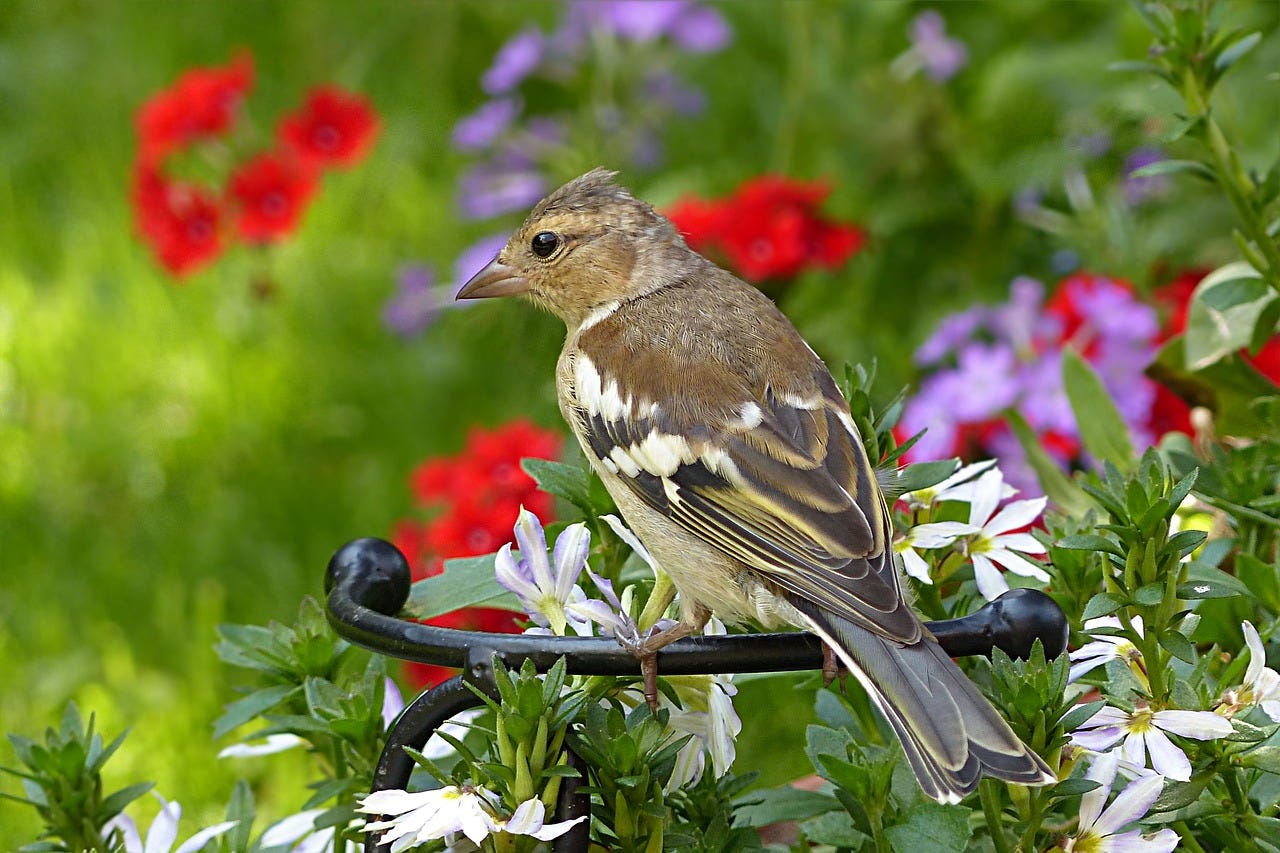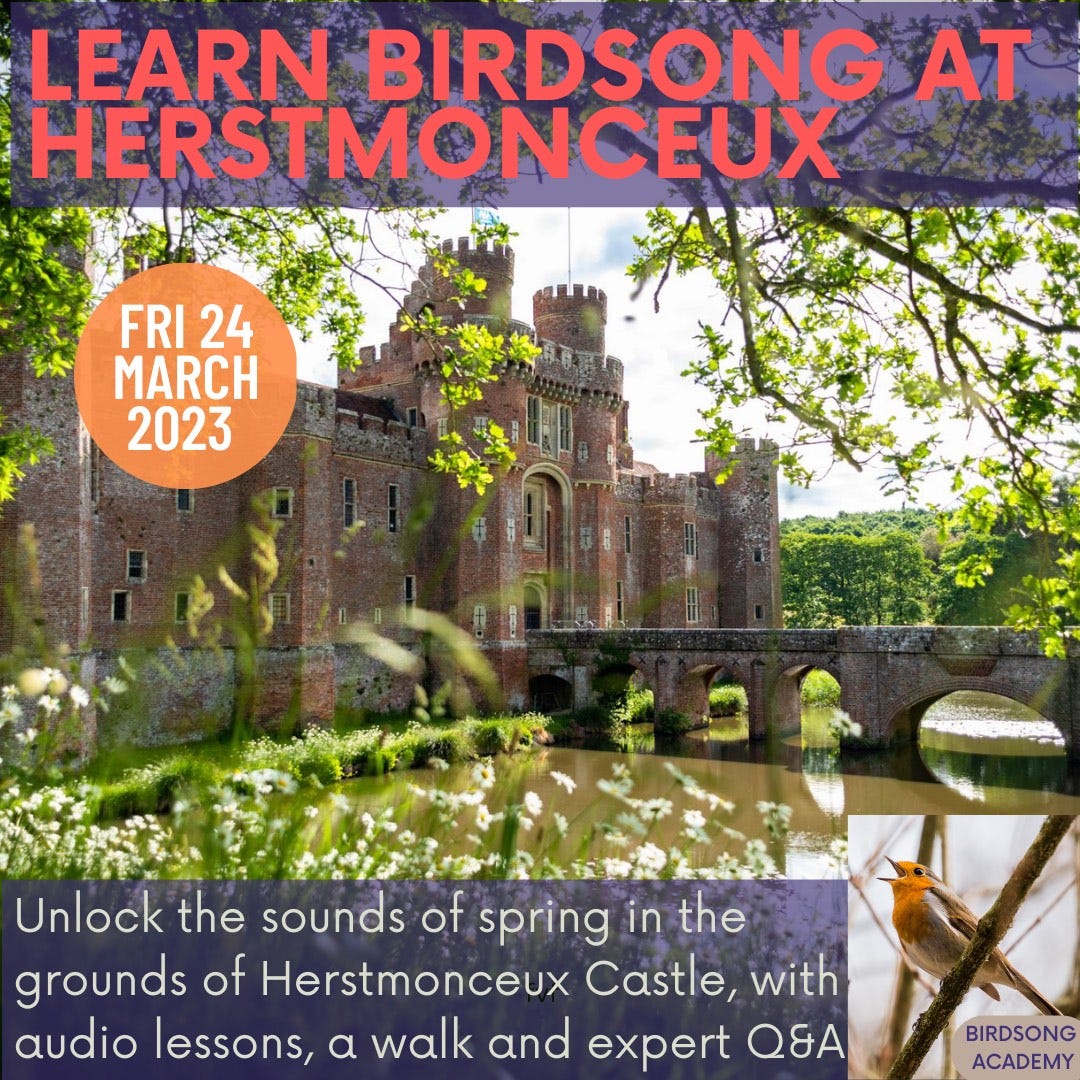Alongside the woodpecker’s drumming and the great tit’s squeaky bicycle pump, the bouncing ball cascade of the chaffinch is a welcome soundtrack to later winter.
The sound is sometimes likened to the rhythm of a bowler running in to deliver a cricket ball.
Another way to think of it: imagine the chaffinch is throwing the song down three wide steps, from its perch to the ground.
It’s as if the notes bounce a few times on each step before rolling to a stop at your feet.
Chaffinches like to deliver their cheerful notes from mid-height - above the robins and dunnocks, but not as loftily as the thrushes. They will often sit out in the open, allowing a glimpse of the orange-pink of their neck, chest and belly.
Famously there are distinctive regional variations in the song. A chaffinch in Scotland is likely to sound different to one in Sussex.
The notes at the end show most variation, but the number and tone of the ‘steps’ can change too. Compare this next one to the one above.
Helpfully the overall pattern of the song retains a recognisable shape, so unlike great tits and song thrushes they don’t normally pose an identification headache.
Pink ‘pink!’-er
When they’re not singing, chaffinches have a sophisticated range of other calls, from a soft ‘hueet’ to a repetitive ‘chip’ to an exclamatory ‘chink!’ or ‘pink!’ - once you know that last one you are bound to notice many more chaffinches around you while out walking.
Little extras
Chaffinches have the widest diets of any of our finches, which helps them make a living across most habitats in the UK.
The chaffinch’s Latin name Fringilla coelebs (coelebs = bachelor) refers to the all-male winter flocks that are noted in northerly places such as Sweden. Females tend to winter further south.
You can identify females by the extensive white in the wings and the outer tail feathers. Both features are particularly noticeable when the bird flies.
Next week: Goldcrest
New! Links of the week
📝 What if the commonest bird on your garden list was Twite? A lovely short film from RSPB reserve manager on Islay David Thomas Dinsley, via Sharon Lashley
🕶 How many hummingbirds can a hummingbird feeder hold? Live cam from California, as featured in our ‘evening session’ Zoom call this week - thanks Diane K for sharing your roadrunners and roseate spoonbills too
🎧 How long can Charlie talk about birds for? Answer: at least an hour and a half. I talk to Sussex University’s Dr Jamie Barnes about growing up with nature and learning about birdsong. Find it on Apple podcasts, or by searching for ‘Ecological Sensibilities’ wherever you listen to podcasts.
Join Birdsong Academy events this spring:
British Birdsong Essentials: the 10-week course has just started. There are two spots left and still time to join before the first practice session.
Up With The Birds: a free-to-all ‘virtual dawn chorus’ meeting on Zoom, the next is Saturday 11 March
Half-day birdsong ‘walkshops’ in Stanmer Park, Brighton and Herstmonceux Castle (near Hailsham).
Media credits:
Thanks to the British Library for their recordings.
Photo 1 by Jonny Gios on Unsplash
Photo 2 by Oldiefan on Pixabay






